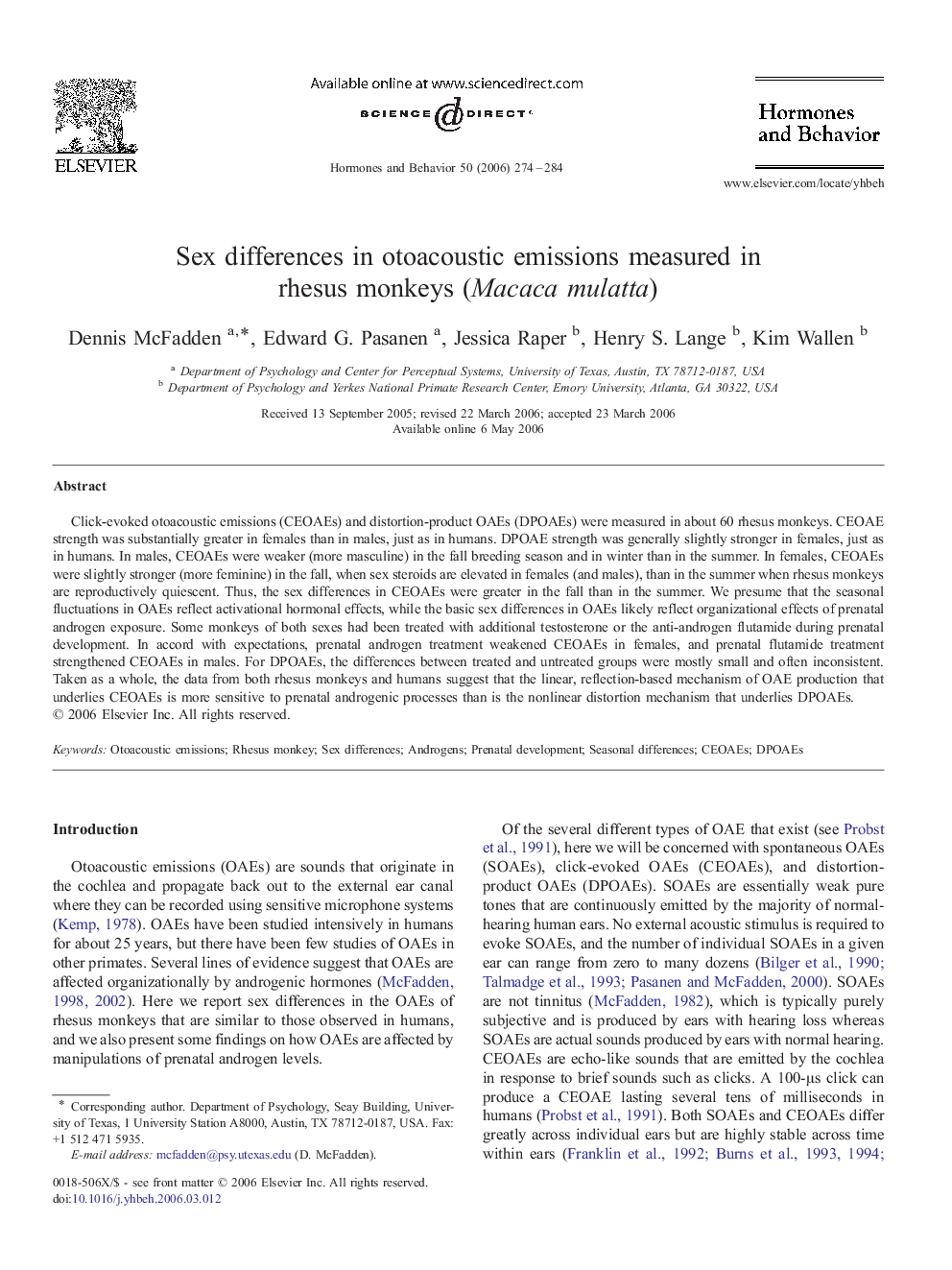| Article ID | Journal | Published Year | Pages | File Type |
|---|---|---|---|---|
| 323925 | Hormones and Behavior | 2006 | 11 Pages |
Click-evoked otoacoustic emissions (CEOAEs) and distortion-product OAEs (DPOAEs) were measured in about 60 rhesus monkeys. CEOAE strength was substantially greater in females than in males, just as in humans. DPOAE strength was generally slightly stronger in females, just as in humans. In males, CEOAEs were weaker (more masculine) in the fall breeding season and in winter than in the summer. In females, CEOAEs were slightly stronger (more feminine) in the fall, when sex steroids are elevated in females (and males), than in the summer when rhesus monkeys are reproductively quiescent. Thus, the sex differences in CEOAEs were greater in the fall than in the summer. We presume that the seasonal fluctuations in OAEs reflect activational hormonal effects, while the basic sex differences in OAEs likely reflect organizational effects of prenatal androgen exposure. Some monkeys of both sexes had been treated with additional testosterone or the anti-androgen flutamide during prenatal development. In accord with expectations, prenatal androgen treatment weakened CEOAEs in females, and prenatal flutamide treatment strengthened CEOAEs in males. For DPOAEs, the differences between treated and untreated groups were mostly small and often inconsistent. Taken as a whole, the data from both rhesus monkeys and humans suggest that the linear, reflection-based mechanism of OAE production that underlies CEOAEs is more sensitive to prenatal androgenic processes than is the nonlinear distortion mechanism that underlies DPOAEs.
